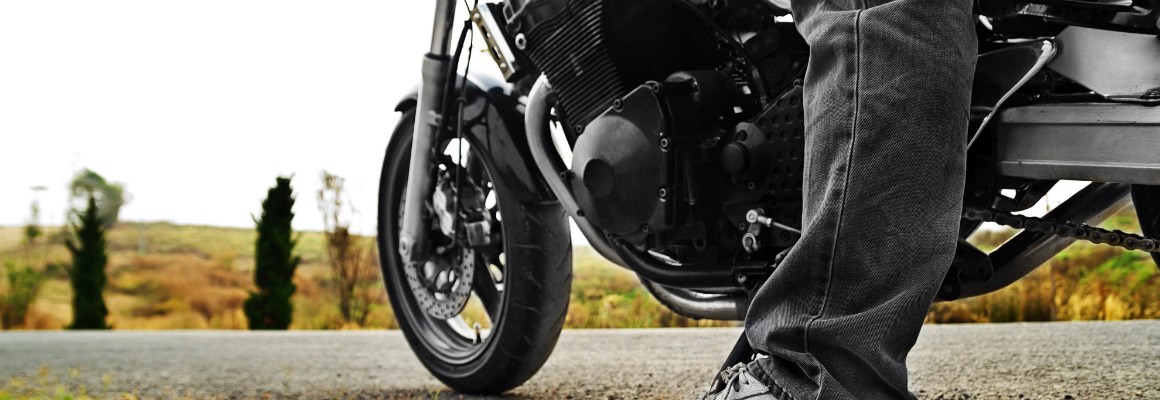A biker for all seasons
If you have not ever ridden a motorbike or scooter it’s hard to imagine how vulnerable they are on the road, until you get on one.
Different weather conditions and the variable road conditions they can create are one of the biggest challenges for two-wheelers on the roads today, regardless of the tyre quality and braking technology advances of recent years.
Here’s a guide to the four seasons and the different problems that riders often face as the weather changes, and how to prevent these meteorological variations becoming a threat to your safety and wellbeing on the road, courtesy of road safety organisation IAM RoadSmart.
Spring
- Spring showers, inconsistent temperatures and rolling mists are the common challenges that bike riders face as the nation re-awakens after the winter. Here’s how to prepare as the clocks prepare to go forward.
- Make sure you’ve got the right clothing to hand if you’re embarking on a medium length or long journey. The weather at this time of year is unpredictable, so it could rain or turn cold suddenly. It may look like summer outside sometimes in Spring, but be as cold as a winters’ day.
- It’s a good time to get your bike serviced – the long winter months of cold, salted road and wet may have taken their toll on your bike.
- Spring can be a windy time of year as the season changes over so watch out when you overtake high sided lorries or pass tall buildings – sudden gusts in these situations are not uncommon, as are the accidents they can cause.

Summer
- Don’t be tempted to remove your safety jacket, trousers or boots and wear lighter clothing just because it’s a lovely hot summers’ day. Being inside a heavy jacket with armoured elbows and shoulders may seem painful as you sweat away in the traffic, but the damage that even a light fall can do to unprotected skin are well documented.
- In Summer, many riders venture out on long weekend journeys to explore new areas of the UK – and further afield. But in today’s increasingly car-clogged traffic this means filtering through stationary or slow moving traffic on town centre, A-road and even motorway routes. IAM Roadsmart says this includes traffic travelling up to 20mph. This can be one of the most tiring forms of riding as you’ve got to be on your toes in case cars suddenly change lanes or swerve out, so ideally don’t go faster than 10-15 mph, and plan a safe escape route should you have to swerve or break suddenly.
Autumn
- The greatest challenge for bike riders during the Autumn months are wet or soggy leaves on the ground, which many bikers don’t realise can be more lethal as ice.
- Pay attention to where you are positioning your bike on the road because leaves, like ice, are like nothing you have ever ridden on. When grip is zero your motorcycling skills will make little difference. Also, be aware where water collects, because a ‘dry line’ is better and safer.
Winter
- The biggest challenge – and grip – for bikers are potholes, which multiply wildly during the winter months as cold water, ice and snow decimate the roads. They are manageable during daylight, but can be a particular and sometimes very dangerous problem at night time when, as IAM Smart put it, they developer an “invisible attraction” to your wheels. It’s best to slow down and choose a route along roads that you know the local council have been keeping in good condition.
- Winter can also be when storms roll in from the Atlantic and winds scour across the UK, making riding dicey at times. Tips to help prevent a few gusts turning into catastrophe, use your throttle and counter steering to keep your bike on the straight, and ensure your clothing is properly buttoned up. There’s nothing you can do about a flapping jacket once you’re on the move.
- Keep your visor clean at this time of year. For most of the year it doesn’t seem to matter if it’s a bit smudged, but find yourself on a dark, damp and cold night faced with a bright car’s headlamps and it can be very disorientating, as can the glare of street lighting.
- Watch out for ice and in particular black ice – which can sometimes appear to be juts wet road surface. If it’s a really cold morning and you know temperatures have been below zero overnight, then go slowly – speed is usually the key problem when you do hit a patch of ice, as braking on it is impossible once you’re on top of it.